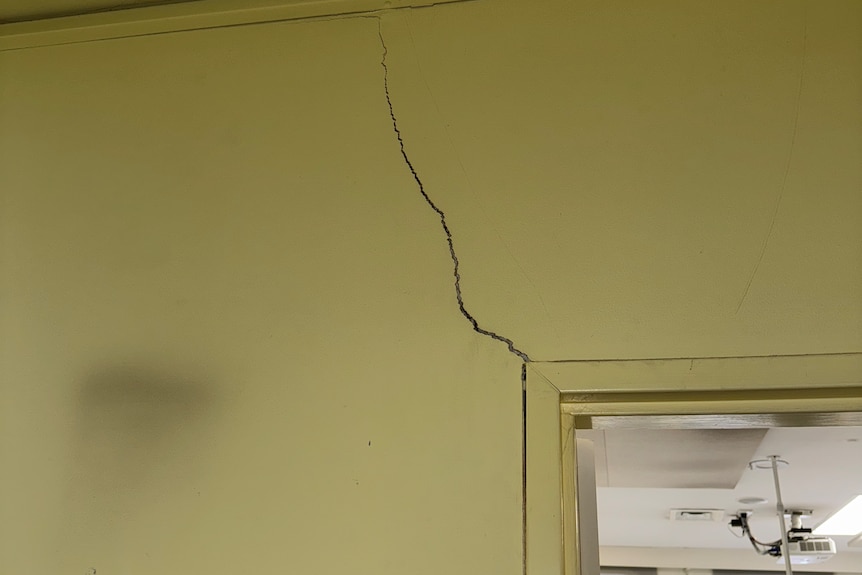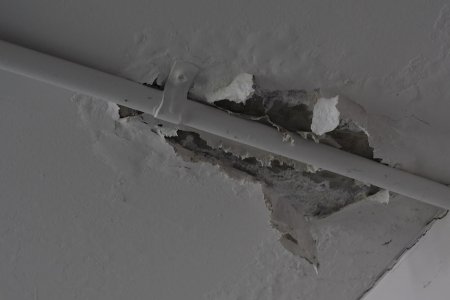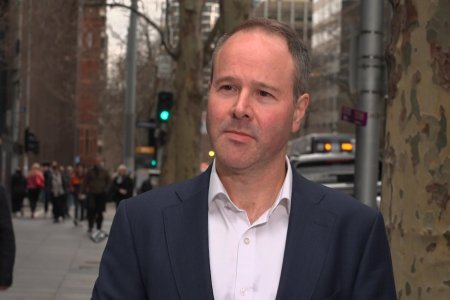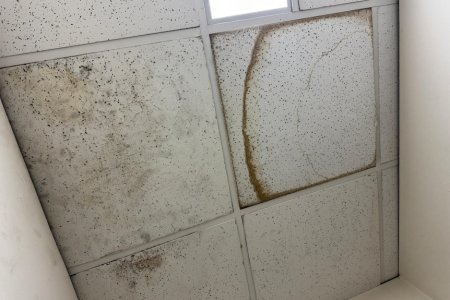
In inner city Melbourne, a not-for-profit community health service building is falling apart.
Leaking ceilings, doors that do not close, cracked walls and uneven floors are all issues the staff have gotten used to.
But it is not something they are proud to show their patients.
cohealth's deputy CEO, Christopher Turner, said the staff often have to close rooms and cancel appointments as the roof leaks when it rains.
'It's fairly common that we would have one or two rooms needing some fixing and maintenance at any one time,' Mr Turner said.
cohealth has deemed its Collingwood building, which houses 60 staff and sees 4,000 patients a year, at the end of its life.
'It's challenging for staff and it's challenging for the community. We're having conversations at the moment about whether we can keep providing care at this facility,' Mr Turner said.
Ashley Nind is a nurse and the director of primary and community care at cohealth.
He said the outdated building, which did not meet infection control standards, made it difficult for cohealth to attract new staff.
'There is a safety risk,' he said.
'Our inability to attract people into the space because of the buildings jeopardises our ability to expand that service, and that reach that we have.'
But cohealth is not alone.
Eighty-nine per cent of the 24 registered community health organisations surveyed by Infrastructure Victoria in a new report said at least one of their buildings was in poor condition or close to the end of its life.
Health services forced to decline govt funding
The report published on Wednesday shows community health organisations are struggling to service their existing clients in aging buildings, let alone expand services to meet growing demand.
Organisations say they have had to decline government funding grants for service expansion due to the poor infrastructure.
'Community health services have told us there is demand for more services, but when they look at the infrastructure they have, they are not able to apply for additional funding to expand those services,' Infrastructure Victoria CEO Jonathan Spear said.
Demand for community-based mental health and wellbeing in particular is expected to grow significantly over the next decade, with some of the state's growth areas forecast to double in population by 2036.
'If we don't plan to grow these services, the health conditions of our community's most vulnerable will probably escalate to the point that they have to be admitted to the emergency department,' Mr Spear said.
Calls for more funding to go to community health infrastructure
Infrastructure Victoria's report described government funding for community services as lacking and fragmented, with no recent, dedicated federal fund for community health infrastructure, despite the Australian government spending $117 billion on healthcare in 2024-25.
It said community health organisations received just 0.3 per cent of the $2 billion the Victorian government spends on health infrastructure each year.
Infrastructure Victoria has called for this to be increased to 1.5 to 3 per cent, or $45 million, to fund essential upgrades and maintenance.
'They'll then be able to deliver better services, we'll have more healthy Victorians, and it'll reduce demand on the hospital system,' Mr Spear said.
The organisation has also recommended the state government conduct an audit assessing the state of facilities, and undertake long-term infrastructure planning in consultation with health services.
'If we don't increase the amount of funding for community health services and the infrastructure that supports them, then we're going to miss the opportunity for a much more effective healthcare system and a much more cost effective one as well.'
The Victorian government said it had dedicated programs for improving community health infrastructure in place.
'Grant programs like our Regional Health Infrastructure Fund and the Metropolitan Health Infrastructure Fund are also supporting community health services across the state to provide the very best care with funding to upgrade facilities and medical equipment,' a government spokesperson said.
'We will carefully review the recommendations in this report and continue to work with community health services to understand how best to support them and their vital work.'
More modern buildings would mean less people in hospital
Ashley Nind says patients deserve better facilities. (ABC News: Shannon Schubert)
According to the Australian Institute of Health and Welfare, more than 500,000 Victorians could avoid a visit to their local hospital, saving the public healthcare system about $550 million, if their health was managed by primary care or community health.
This is something cohealth nurse Mr Nind has seen firsthand.
'People want to make sure that their healthcare services are clean, bright, warm and welcoming,' he said.
He said community health services played a crucial role in preventative care for some of the community's most vulnerable residents, but the state of their facilities were making it more challenging.
'It's not just about the aesthetic,' he said.
'Clients say, "Why are you still working here? Why aren't we moving to a better site? When are we going to fix that crack on the wall?"'
Written by Shannon Schubert, ABC News.












